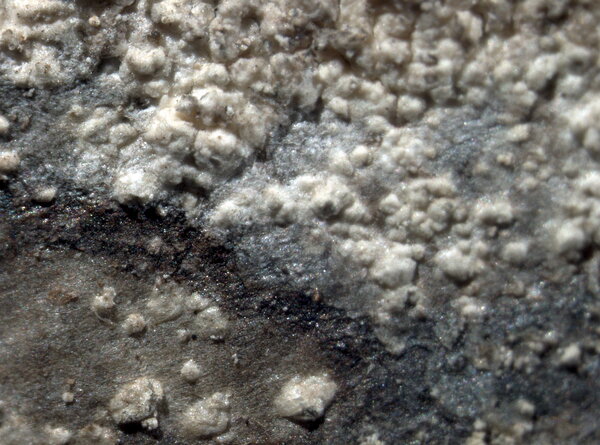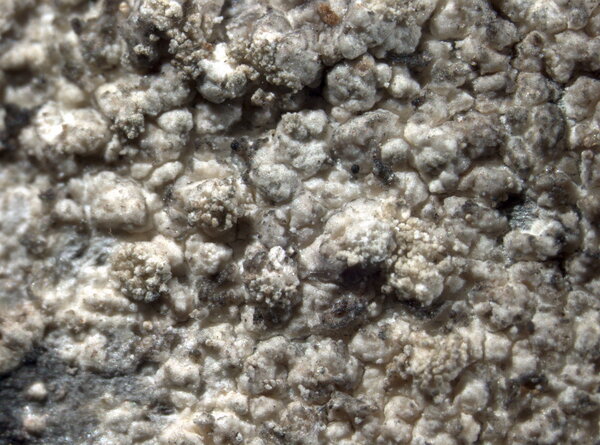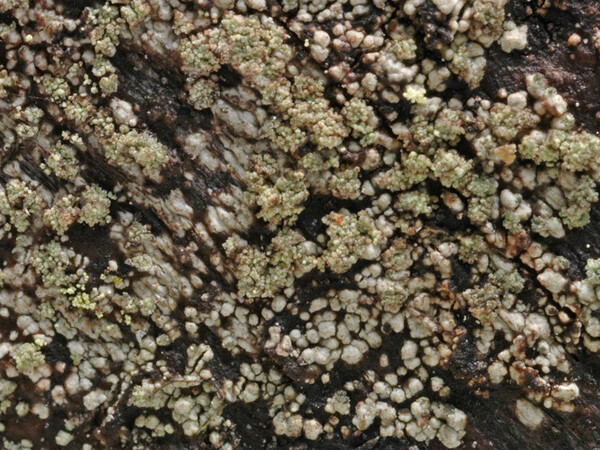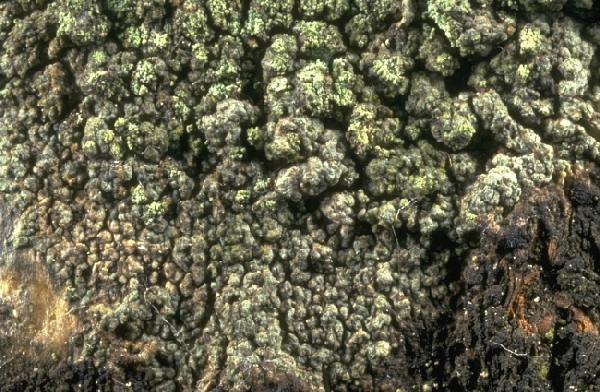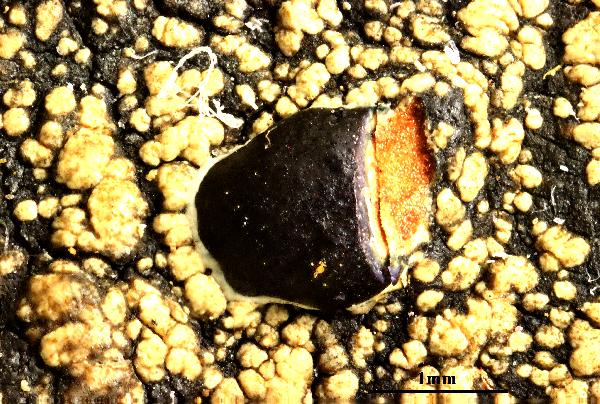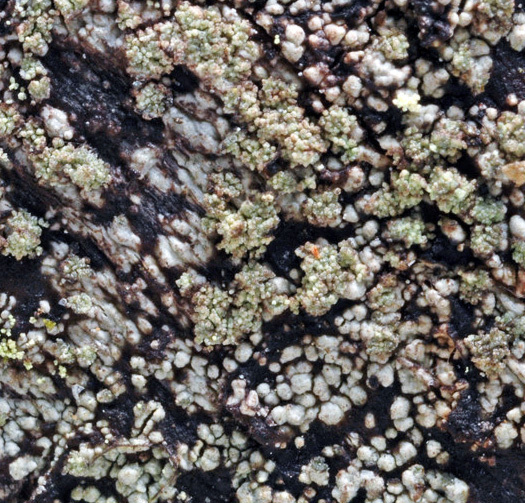Violella fucata (Stirt.) T. Sprib.
Lichenologist, 43: 461, 2011. Basionym: Lecidea fucata Stirt. - Scottish Natur., 5: 16, 1879.
Synonyms: Megalospora fucata (Stirt.) H. Olivier; Mycoblastus fucatus (Stirt.) Zahlbr.; Mycoblastus sterilis Coppins & P. James
Distribution: N - Frl (Nascimbene & al. 2021), TAA (Thor & Nascimbene 2007, Nascimbene & al. 2007b, 2022, Nimis & al. 2015). C - Tosc (Brackel 2015).
Description: Thallus crustose, episubstratic, greyish white to bluish grey in non-sorediate parts, continuous to areolate, usually but not always sorediate, forming regular or irregular, up to 3(-l0) cm wide patches, often delimited by a blue- or brown-black prothallus, especially when forming mosaics. Areoles more or less rounded to irregular in outline, adnate, convex, up to c. 0.3 mm in diam.; continuous parts usually distinctly tuberculate and more or less fissured. Soralia green or pale yellowish green when abraded, often appearing bluish grey due to a pigment in the external soredia, bursting from apices of areoles or tubercles, concave to convex, usually of variable size, up to 1.5 mm in diam., discrete to contiguous, occasionally a few becoming confluent, but never forming a leprose crust. Soredia mostly farinose, sometimes gathered into larger consoredia up to 90 μm in diam.; external soredia sometimes with a brown, K+ intensifying, N+ reddish brown pigment. Apothecia usually rare, biatorine, 0.5-1.5(-2) mm across, black, closely adpressed, with a flat to strongly convex disc and a thin, soon excluded proper margin. Proper exciple reduced, the hyphae vertically arranged and resembling paraphyses; epithecium scarcely differentiated from the hymenium; hymenium greenish (Cinereorufa-green pigment), with many purple-violet granules (Fucatus-violet pigment) reacting N+ red, K+ dissolving bright green; paraphyses branched and anastomosing, straight or slightly curved with thinner cross-bridges; hypothecium red-brown, the lower part pale violet to colourless, rarely red-brown-spotted. Asci (1-)2(-3)-spored, cylindrical-clavate, very thick-walled, with a K/I+ blue apical dome and a distinct ocular chamber, the outer layer forming a K/I+ dark blue apical cap, intermediate between the Biatora and the Bacidia-type. Ascospores 1-celled, hyaline but turning brownish when overmature, ellipsoid, (25-)30-48(-52) x 15-21 μm, initially with a single wall, later with an additional internal wall turning brown. Photobiont chlorococcoid. Spot tests: K+ bright yellow turning red-brown, C-, KC+ dull brown, P+ rust-red, UV-. Chemistry: fumarprotocetraric acid, atranorin, chloroatranorin, traces of protocetraric acid.Note: a cool-temperate lichen found on bark in humid woodlands of the montane belt; certainly much overlooked in the Alps, being mostly sterile. It is included in the Italian red list of epiphytic lichens as “Data Deficient” (Nascimbene & al. 2013c).
Growth form: Crustose
Substrata: bark
Photobiont: green algae other than Trentepohlia
Reproductive strategy: mainly asexual, by soredia, or soredia-like structures (e.g. blastidia)
Commonnes-rarity: (info)
Alpine belt: absent
Subalpine belt: absent
Oromediterranean belt: absent
Montane belt: very rare
Submediterranean belt: absent
Padanian area: absent
Humid submediterranean belt: absent
Humid mediterranean belt: absent
Dry mediterranean belt: absent
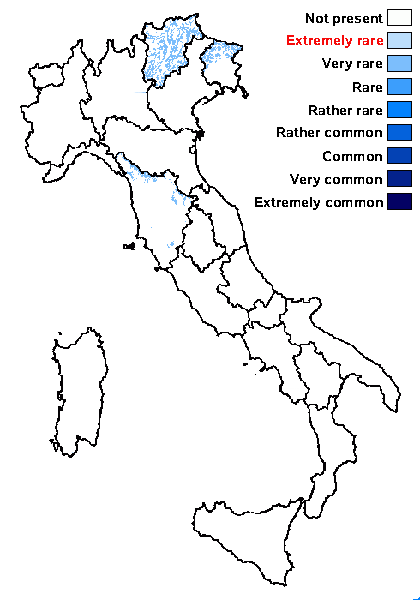
Predictive model
Herbarium samples


Felix Schumm - CC BY-SA 4.0
[VZR66], Sina. Priv. Yunnan, montes Yulong Shan, 30 km ad
septentriones ab oppido Likiang, 4000 m. Ad truncum arboris. Leg. J.
Soják, 25.7.1990, det. A. Vezda. EX A. VEZDA: LICHENES RARIORES
EXSICCATI NR. 66, as Mycoblastus fucatus


P.L. Nimis; Owner: Department of Life Sciences, University of Trieste
Herbarium: TSB (18194)
2001/11/26
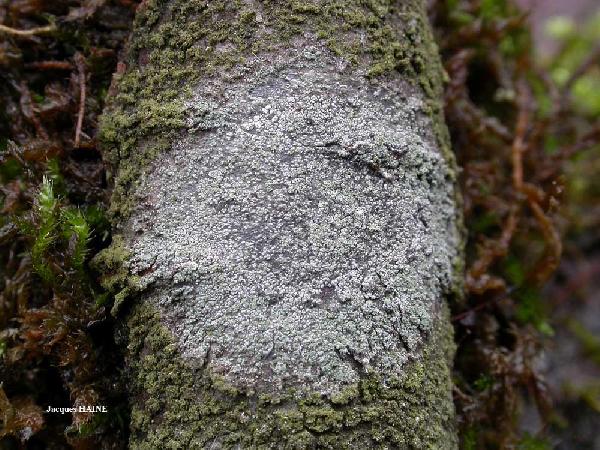
Jacques Haine - Source: http://www.lichensmaritimes.org/index.php?task=fiche&lichen=618&lang=en
France, Ardennes
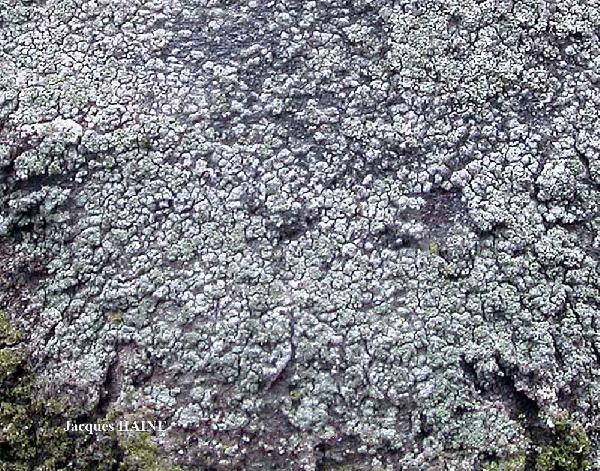
Jacques Haine - Source: http://www.lichensmaritimes.org/index.php?task=fiche&lichen=618&lang=en
France, Ardennes
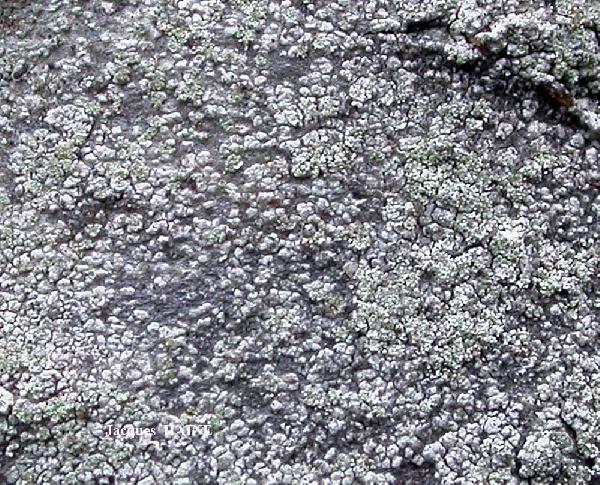
Jacques Haine - Source: http://www.lichensmaritimes.org/index.php?task=fiche&lichen=618&lang=en
France, Ardennes
Growth form: Crustose
Substrata: bark
Photobiont: green algae other than Trentepohlia
Reproductive strategy: mainly asexual, by soredia, or soredia-like structures (e.g. blastidia)
Commonnes-rarity: (info)
Alpine belt: absent
Subalpine belt: absent
Oromediterranean belt: absent
Montane belt: very rare
Submediterranean belt: absent
Padanian area: absent
Humid submediterranean belt: absent
Humid mediterranean belt: absent
Dry mediterranean belt: absent

Predictive model
| Herbarium samples |


Felix Schumm - CC BY-SA 4.0
[VZR66], Sina. Priv. Yunnan, montes Yulong Shan, 30 km ad septentriones ab oppido Likiang, 4000 m. Ad truncum arboris. Leg. J. Soják, 25.7.1990, det. A. Vezda. EX A. VEZDA: LICHENES RARIORES EXSICCATI NR. 66, as Mycoblastus fucatus


P.L. Nimis; Owner: Department of Life Sciences, University of Trieste
Herbarium: TSB (18194)
2001/11/26

Jacques Haine - Source: http://www.lichensmaritimes.org/index.php?task=fiche&lichen=618&lang=en
France, Ardennes

Jacques Haine - Source: http://www.lichensmaritimes.org/index.php?task=fiche&lichen=618&lang=en
France, Ardennes

 INDEX FUNGORUM
INDEX FUNGORUM
 GBIF
GBIF
 DOLICHENS
DOLICHENS
